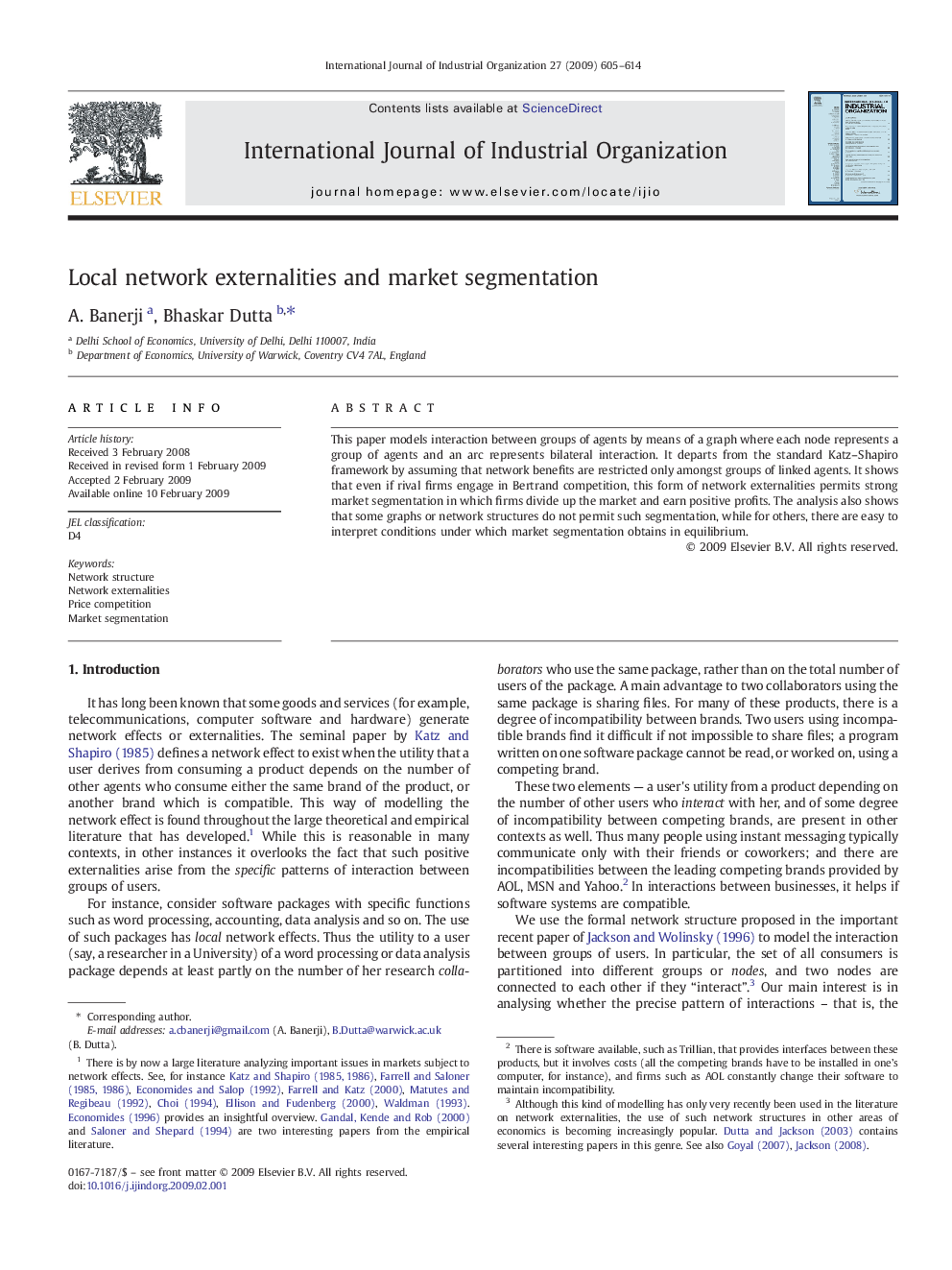| Article ID | Journal | Published Year | Pages | File Type |
|---|---|---|---|---|
| 5078334 | International Journal of Industrial Organization | 2009 | 10 Pages |
Abstract
This paper models interaction between groups of agents by means of a graph where each node represents a group of agents and an arc represents bilateral interaction. It departs from the standard Katz-Shapiro framework by assuming that network benefits are restricted only amongst groups of linked agents. It shows that even if rival firms engage in Bertrand competition, this form of network externalities permits strong market segmentation in which firms divide up the market and earn positive profits. The analysis also shows that some graphs or network structures do not permit such segmentation, while for others, there are easy to interpret conditions under which market segmentation obtains in equilibrium.
Related Topics
Social Sciences and Humanities
Economics, Econometrics and Finance
Economics and Econometrics
Authors
A. Banerji, Bhaskar Dutta,
